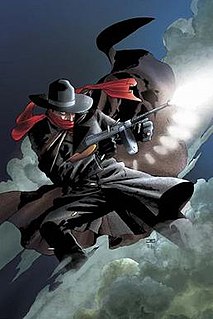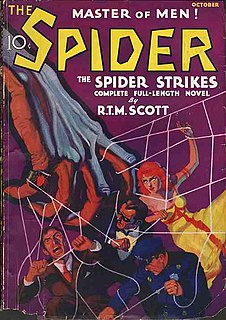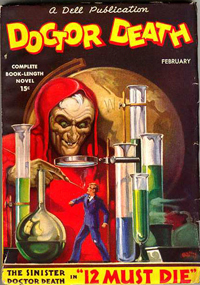Thubway Tham is a pulp fiction character created by Johnston McCulley, who was also the creator of Zorro. He is described as a small, short tempered gnome of a man of almost forty (Thubway Tham's Holdup) and he first appeared in Detective Story Magazine on June 4, 1918, and he appeared in over one hundred and eighty short stories in several pulp fiction publications from the 1910s to the 1960s. Thubway Tham, as described by McCulley, is "a clever pickpocket, one of the cleverest in the business, and [he works] only in the subway during rush hours." [1] His friends had called him "Subway Sam," but, due to his lisp, his nickname soon became "Thubway Tham."

Pulp magazines were inexpensive fiction magazines that were published from 1896 to the 1950s. The term pulp derives from the cheap wood pulp paper on which the magazines were printed. In contrast, magazines printed on higher-quality paper were called "glossies" or "slicks". The typical pulp magazine had 128 pages; it was 7 inches (18 cm) wide by 10 inches (25 cm) high, and 0.5 inches (1.3 cm) thick, with ragged, untrimmed edges.

Johnston McCulley was the author of hundreds of stories, fifty novels, numerous screenplays for film and television, and the creator of the character Zorro.

Zorro is a fictional character created in 1919 by American pulp writer Johnston McCulley, and appearing in works set in the Pueblo of Los Angeles during the era of Spanish California (1769–1821). He is typically portrayed as a dashing masked vigilante who defends the commoners and indigenous peoples of California against corrupt and tyrannical officials and other villains. His signature all-black costume includes a cape, a hat known as a sombrero cordobés, and a mask covering the upper half of his face.
A typical Thubway Tham story features the pickpocket committing some sort of crime. He is closely pursued by Detective Craddock, but due to Tham being smarter than the cop always on his tail, Thubway Tham always gets away. There are times when he and Tham hate each other, when he follows Tham all day so he can pick no pockets, and Craddock when he knows Tham has got one over on him. He served a three year sentence as a youth and never wants to go back to jail. Some of the people who Tham robs are deserving of the theft but generally he will go after anyone with a wallet (called a leather) full of money, usually around a hundred dollars. He also sometimes antagonizes bigger criminals to teach them a lesson. Tham is superstitious and acts on hunches, one of which saves him jail time when a police officer tries to frame him for theft (Thubway Tham's Hoodoo Roll).
In 2005, Wildside Press released a collection of Thubway Tham stories entitled Tales of Thubway Tham. In 2015, they issued the Thubway Tham Megapack, containing 22 short stories, costing just under a dollar for Amazon Kindle.
Wildside Press is an independent publishing company in Cabin John, Maryland, United States. It was founded in 1989 by John Betancourt and Kim Betancourt. While the press was originally conceived as a publisher of speculative fiction in both trade and limited editions, its focus has broadened since then, both in content and format.











